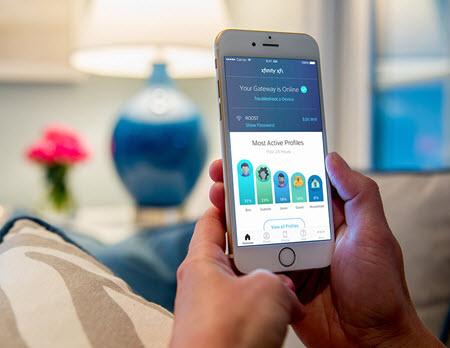Five Ways Comcast Is Leading in Tech

By bringing a sizable portion of its tech-facing initiatives in-house, Comcast has put itself into position to launch and upgrade services at a pace never before seen in the cable industry.
Amid a shift to becoming more adept at software development while keeping a hand in aspects of hardware design, Comcast has been able to retain unprecedented control of products spanning video, broadband, home security and automation, and in-home WiFi.
The Distributor of the Year Issue:Smooth Operator|Comcast's Makeover Yields Results
Here’s a snapshot of five ways Comcast has been leading the way in technology:
X1 Still Flying High
X1, Comcast’s cloud-powered video platform, has been transformational to its video business in more ways than one.
For starters, the service, which supports set-tops as well as streaming apps for smartphones, tablets and web browsers and is used by about 55% of Comcast’s residential pay TV base, has played a key role in improving pay TV subscriber metrics at the company. X1 has also enabled Comcast to expand its influence.
On the product end, X1’s cloud-based infrastructure allows Comcast to add new features, such as voice navigation, at a pace that leaves its legacy platform in the dust.
In addition to providing access to the customer’s pay TV service on multiple screens, in and out of the home, X1 has also been made to weave in OTT services such as Pandora, Netflix and YouTube.
Comcast’s X1 syndication initiative is giving the company the ability to scale the platform beyond its traditional borders, with several tier 1 MSOs already on board, including Cox Communications and three Canadian operators — Shaw Communications, Rogers Communications and Vidéotron.
That syndication strategy, as one industry observer put it, allows Comcast to wield more influence and scale for X1 via “colonization” rather than “consolidation.”
Meeting the Need for Speed
Though fiber-to-the-premises (FTTP) technology factors into Comcast’s residential broadband game plan in targeted use cases with its Gigabit Pro service, the operator’s aggressive deployment of DOCSIS 3.1 has enabled the operator to rapidly bring Gigabit-level broadband speeds to the bulk of its footprint.
In addition to helping it keep pace with rivals such as Google Fiber and AT&T Fiber, Comcast’s rollout of D3.1 has also helped the company grab some bragging rights — Comcast recently was deemed by Ookla as the fastest ISP in the fixed broadband category.
DOCSIS 3.1 currently gives Comcast a way to bring 1-Gig speeds to consumers in the downstream. Expect Comcast to continue to be a champion of Full Duplex DOCSIS, which will deliver symmetrical gigabit speeds.
Going Wireless, and Mobile
The launch of Xfinity Mobile has been Comcast’s biggest move this year with respect to wireless and mobile, putting the company in position to broaden its bundle and take advantage of its MVNO deal with Verizon Communications and its WiFi footprint of about 18 million hotspots.
In the home, Comcast is keying on whole-home WiFi with xFi, a new cloud-based management platform that helps customers troubleshoots issues, easily change WiFi network passwords, and keep closer tabs on the devices that are hanging off the home network. Soon, Comcast is expected to back that up with a new line of WiFi “pods” that connect to the main gateway and bathe the home in WiFi.
Comcast is making some big bets in this area, as it was a lead investor in Plume’s recent $37.5 million funding round (Plume is helping with those aforementioned WiFi pods), and just acquired Stringify, an IoT tech startup that helped Comcast develop xFi.
Owning the Smart Home
Comcast is trying to own the video experience with X1, and is doing the same with home automation and security with Xfinity Home, a service that now has about 1 million customers.
Comcast, which acquired a big piece of Icontrol earlier this year, has essentially created its own smart home ecosystem that supports an array of Comcast-made products, as well as several from third-party suppliers through its Works with Xfinity Home program.
Product Design
Comcast’s in-house approach with X1, xFi and Xfinity Home isn’t limited to software and applications. Comcast has also been putting its own stamp on things by designing many of the hardware products that are powering all of these services.
And those efforts are getting some recognition from the product design industry. Earlier this year, Comcast netted three Red Dot Design Awards for products for X1 — the Xfinity XG1V4 (a 4K set-top box); the Xi5 (a wireless set-top box with High Dynamic Range capabilities); and a new voice remote called the XR15.
The smarter way to stay on top of the multichannel video marketplace. Sign up below.
